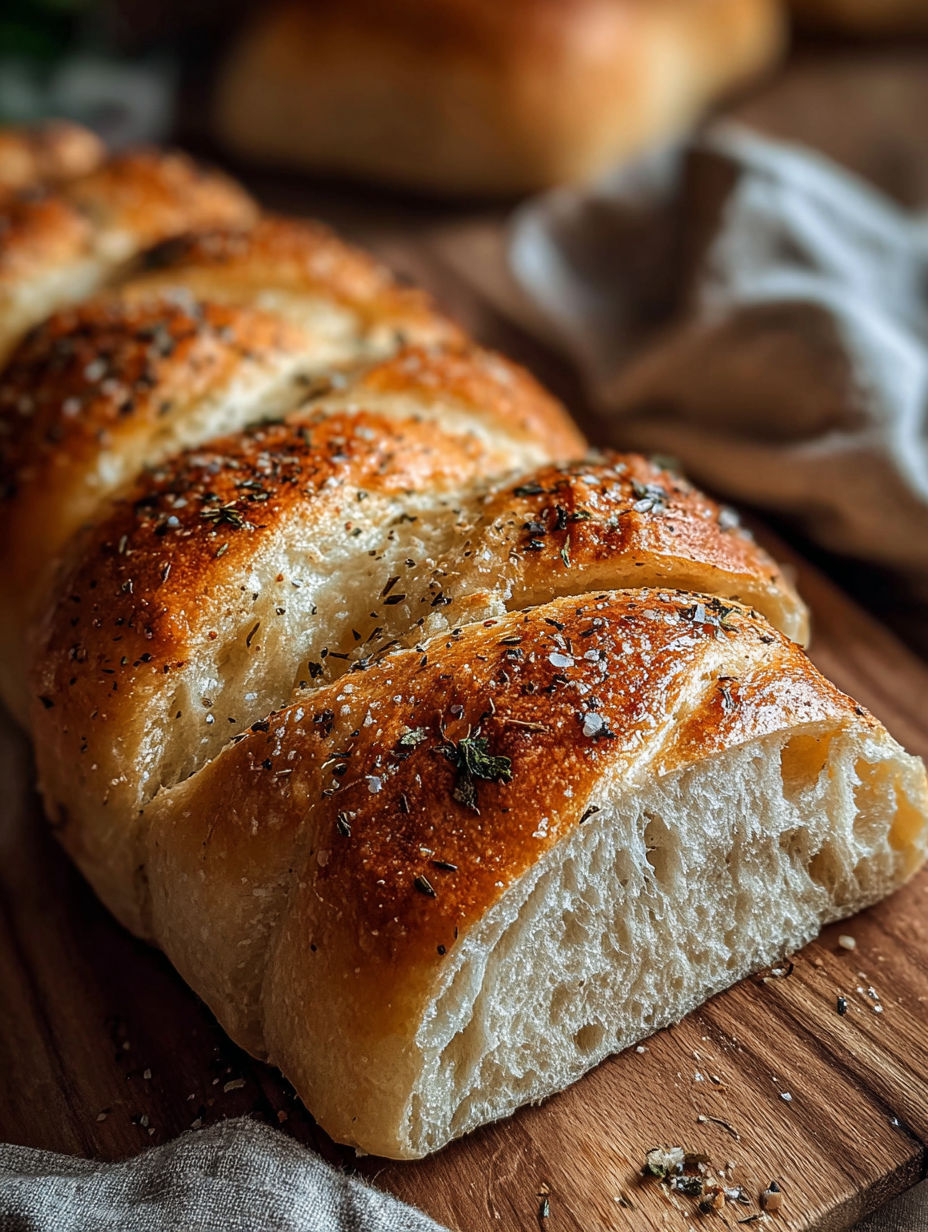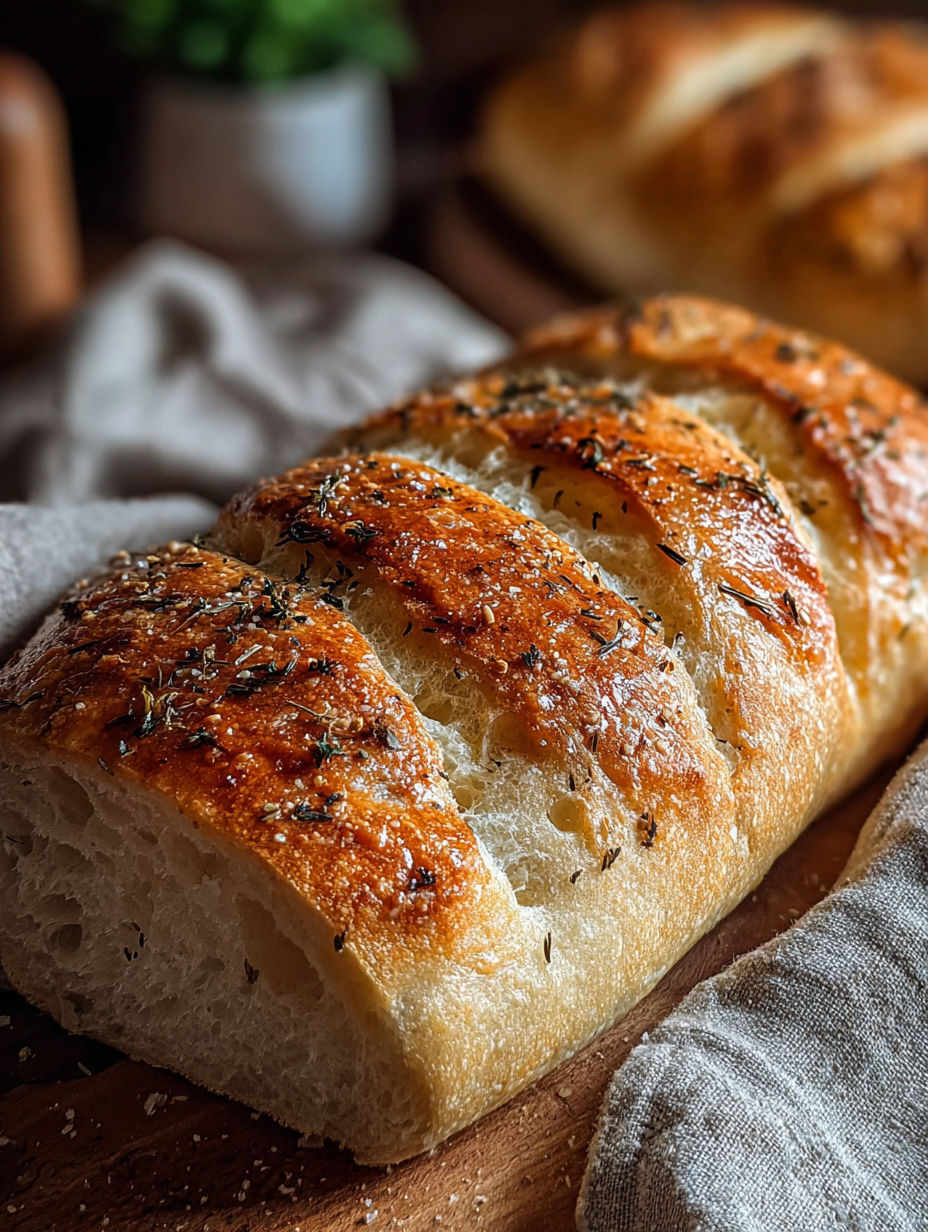 Save
Save
This crusty Italian bread is my favorite for lazy Sunday mornings or whenever I crave something fresh from the oven with a satisfying crunch. It pairs beautifully with olive oil, soups, or just a smear of good butter for a simple pleasure.
I started baking this after struggling to find good crusty bread at the store and now it feels like a small weekend ritual that fills the house with the smell of fresh bread
Ingredients
- 4 cups all-purpose flour: choose a high-quality unbleached flour for the best texture
- 1 ½ teaspoons salt: balances the flavor and strengthens the dough
- 1 teaspoon sugar: feeds the yeast to help the bread rise
- 2 ¼ teaspoons active dry yeast (one packet): make sure your yeast is fresh for a good rise
- 1 ½ cups warm water (roughly 110°F or 45°C): warm enough to activate yeast but not so hot it kills it
- 2 tablespoons olive oil: adds moisture and flavor to the dough
- Cornmeal for dusting: prevents sticking and adds a subtle crunch to the bottom crust
Instructions
- Build The Yeast Mixture:
- Combine warm water and sugar in a large bowl then sprinkle yeast over the top. Let it rest for 5 to 10 minutes until the yeast foams which signals it is active.
- Mix The Dough:
- Add flour salt and olive oil to the yeast mixture. Stir with a spoon until a sticky dough forms. This initial mix pulls everything together before kneading.
- Knead The Dough:
- Turn dough out onto a lightly floured surface and knead for 8 to 10 minutes until smooth and elastic. You can use a stand mixer with a dough hook for about 5 minutes on medium speed. Proper kneading builds the gluten giving the bread structure and chew.
- First Rise:
- Place the dough in an oiled bowl, cover with a kitchen towel and leave it in a cozy warm spot for 1 to 2 hours until doubled in size. This process develops flavor and volume.
- Shape And Second Rise:
- Punch the dough gently to release air bubbles. Shape it into a round or oval loaf and place it on a parchment lined baking sheet dusted with cornmeal. Cover again and let rise for 30 to 45 minutes until puffy.
- Score And Bake:
- Heat oven to 425°F (220°C) placing a baking sheet or pizza stone inside to heat. Just before baking use a sharp knife or lame to slash the top of the loaf shallowly. This helps the bread expand in the oven without cracking erratically. Transfer the dough on its parchment to the hot surface and bake for 25 to 30 minutes until the crust turns golden brown and sounds hollow when tapped from underneath.

Olive oil is my secret ingredient here. It softens the crumb and adds a neat fruity note which makes the bread versatile for both savory and sweet toppings. I remember baking this with my grandmother and how the warm crust was the best thing to break into fresh from the fridge the next day.
Storage Tips
Store the bread wrapped loosely in a clean kitchen towel or paper bag at room temperature to keep the crust crisp. Avoid plastic bags which cause sogginess. To freshen a day-old loaf briefly heat in a 350°F oven for 5 to 10 minutes.
Ingredient Swaps
Whole wheat flour can replace up to half the all-purpose flour for a nuttier flavor and denser crumb. Instant yeast can be used instead of active dry just reduce the rising time slightly. Butter can be swapped for olive oil but changes the texture toward a richer crumb.
Serving Ideas
Slice this bread thickly for dipping in olive oil and balsamic vinegar or serve alongside hearty soups like minestrone or roasted tomato basil. Toast slices and add avocado or your favorite cheese for a quick snack.
Seasonal Twists
Add fresh rosemary or olives into the dough during mixing for a seasonal herb bread variation In colder months mix in dried cranberries and walnuts for a slightly sweet and festive loaf Try brushing the crust with garlic olive oil just out of the oven to infuse an aromatic finish

This crusty Italian bread is a rewarding bake that brings wonderful warmth and aroma into your kitchen every time.
Frequently Asked Recipe Questions
- → Why is kneading important for this bread?
Kneading develops the gluten network, ensuring the dough becomes elastic and produces a chewy, airy crumb after baking.
- → What is the purpose of scoring the loaf before baking?
Scoring allows the bread to expand during baking without tearing unpredictably, resulting in a better shape and crust texture.
- → Can I use a pizza stone instead of a baking sheet?
Yes, a preheated pizza stone helps distribute heat evenly, which enhances crust crispiness and browning.
- → How do I know if the yeast is active?
When yeast is mixed with warm water and sugar, it should become foamy within 5-10 minutes, indicating it's active and ready to ferment.
- → Why dust with cornmeal before baking?
Cornmeal prevents the dough from sticking to the baking surface and adds a subtle texture beneath the crust.
